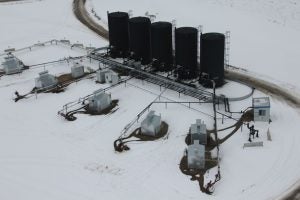 This piece was originally published in The Hill Times
This piece was originally published in The Hill Times
A lot can change in a short period of time.
Just a few months ago, I lauded Canada’s leadership on climate, in general, and on methane pollution in particular. In 2018, the Trudeau government introduced the world’s first national oil and gas regulations limiting emissions of methane, a powerful climate pollutant intensifying near-term global warming.
Then, in the wake of the global health and economic crisis, Prime Minister Trudeau announced a $1.7 billion Emission Reduction Fund to help put oil and gas workers back to work cleaning up tens of thousands of leaky abandoned wells. The investment combined with a $750 million fund to reduce methane and other pollution from oil and gas infrastructure would create up to 10,000 jobs and help stabilize the climate.
These forward leaning actions showcased why Canada was ideally suited to take on a global leadership role and show how a progressive, environmentally-minded energy producing country can act and get others to act.
Since July however, a new analysis of the country’s existing emission inventory has shown Canada’s federal methane regulations would deliver far less impact than earlier projections, putting the country’s global climate leadership in jeopardy. Quite frankly, Canada is running out of time to demonstrate its climate action matches its climate rhetoric.
Will Trudeau make good on Canada’s 2025 climate promises? Share on XCanada’s oil and gas regulations promised to reduce methane emissions 40 to 45% below 2012 baseline levels by 2025. Unfortunately, new data shows that the regulations will only achieve a 29% reduction by 2025, not the promised 40 – 45%. That’s a gap of 5 to 7 million tonnes of carbon dioxide equivalent.
This news came as the federal government is finalizing equivalency agreements with Alberta and Saskatchewan that would allow these provinces to bypass Canada’s federal standards so long as they achieve equivalent methane reductions. Just as Canada’s federal requirements will miss the 40 to 45% reduction target, so too will any provincial regulations deemed equivalent.
You’d think this would cause alarm in Ottawa. Perhaps spark Prime Minister Trudeau to address the problem, pledge to review the regulations or revise the equivalency agreements. None of that has happened yet. Though the government has acknowledged the new analysis and agrees the regulations will fall short of promised reductions, it is moving ahead as if nothing has changed.
Norway, another big energy producing country, continues to take significant steps on climate — although it provided tax relief to the oil and gas industry as part of its COVID recovery package. Still, the country is widely regarded as leading the world on climate action and is seen in some circles as being ahead of Canada in tackling oil and gas emissions.
Whether Canada can rival Norway or other countries intent to make their mark vis-à-vis methane reductions starts with Canada delivering on its promises.
Considering the emissions gap, the Trudeau government should:
- Issue a public statement from Minister Wilkinson pledging to commit to actionable solutions that will close the methane reduction shortfall before 2025.
- Immediately initiate a review of federal methane regulations to ensure they meet the 40 to 45% reduction target, to be completed within 12 months.
- Ensure equivalency agreements explicitly state that any changes made to the federal regulation will require renegotiation with the provinces.
- Make the best use of its Emission Reduction Fund by prioritizing projects that exceed the regulatory minimum and produce or protect the most jobs, especially if taxpayer dollars are going to fund them.
Make no mistake, the world needs Canada to lead on climate and methane. Canada is among a small group of countries that can demonstrate it is possible and prosperous to manage its energy sector in a climate-friendly way. It can do this by investing in readily available cost-effective methane control solutions that protect existing energy jobs and create new ones, too.
But we’ve reached a point where Canada must begin to deliver on its climate and clean energy rhetoric. Actual reductions are the true measure of whether a country is leading on climate. Getting methane right is a perfect opportunity for Canada to prove it means what it says.









